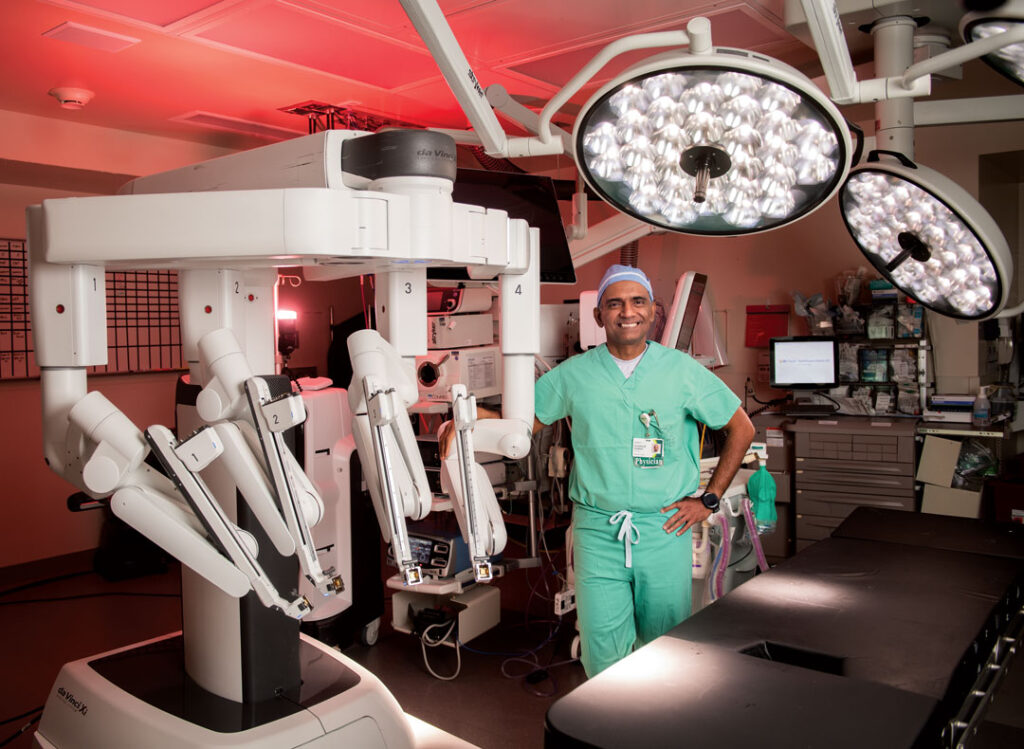‘Adapt & Survive’
Iowa’s 6,200-plus restaurants and bars are dealing with adversity amid steep revenue declines due to state-mandated closure to stem the spread of a virus

KATHY A. BOLTEN Apr 9, 2020 | 3:33 pm
11 min read time
2,610 wordsArts and Culture, Business Record InsiderBy early March, indicators were mounting that the unthinkable would happen.
People were told not to gather in groups of 50, then 10 or more. Schools closed as efforts grew to stave off a deadly virus spreading around the world.
On March 17, Iowa Gov. Kim Reynolds stepped behind a microphone and, reading from prepared remarks, told the state’s more than 6,200 restaurants, bars and casinos that they had less than three hours to shutter their sit-down dining areas.
“You were just awaiting your sentence,” said Josh Holderness, a co-owner of Gusto Pizza and other hospitality businesses, about the days leading to Reynolds’ announcement. “The initial thought was … this could be the end of our businesses.”
In recent years, as Americans became increasingly glued to their cellphones and other electronic devices, it has been food and drink businesses that provided ways for personal interaction. Birthday, anniversary and other milestone events were celebrated at restaurants, bars, event centers and “eatertainment” venues. Friends gathered at bars for after-work drinks or to watch their favorite sporting events. Families ate meals together in restaurant dining rooms.
That all abruptly stopped at 5 p.m. on March 17.
That day the more than 150,000 Iowans – about 9% of the state’s workforce – who earned a living working in the hospitality industry became unemployed or had their hours severely trimmed. The shutdown’s ripple effect reached beyond businesses’ walls to suppliers who found orders of fresh produce, meats, paper products, alcohol and towels canceled. Bankers and landlords were told rent and mortgage payments would be missed. Utility companies received similar calls.
The hospitality industry in 2018 had an estimated $4.7 billion in annual sales in Iowa, but that’s not an indication that operators were flush with cash. Just the opposite.
“In good times, we’re at a 5% net profit,” said Jessica Dunker, president and CEO of the Iowa Restaurant Association. “For the average Iowa restaurant, that’s $100 a day.
“The potential catastrophic effect on independent restaurant owners that lack ability to absorb these kinds of declines in traffic and business … well … we’re very worried about closures.”
Holderness and partners Tony Lemmo and Joe McConville immediately began brainstorming ideas of how to generate business and keep as many of the group’s 90 employees working as possible.
Gusto Pizza began offering carryout frozen pizzas at its two locations as well as family-sized lasagna and macaroni and cheese along with its normal take-and-bake and fully cooked pizza options. Two other venues operated by the partners – El Guapo’s Tequila & Tacos in West Des Moines and Juniper Moon cocktail bar in Des Moines – closed, at least temporarily.
“After that initial thought [of losing the businesses], as an entrepreneur it’s ‘OK, how do we adapt and survive?’” Holderness said.
Restaurants typically have two weeks’ cash on hand
For many Americans – and many Iowans – eating out or grabbing takeout most days a week was a way of life, which makes a statistic from the National Restaurant Association unsurprising: On average, before the novel coronavirus outbreak, 51% of Americans’ food dollar was spent in places other than grocery stores.
As Iowa restaurant owners began to realize their establishments would likely be closed for weeks if not months, several reached out to Reynolds’ office to ensure carryout and delivery would still be allowed, said Scott Carlson, who with a group of other investors owns Court Avenue Brewing Co. and Americana in Des Moines and Gilroy’s in West Des Moines.
State officials “realized that if restaurants were shut down completely, grocery stores would be so overwhelmed that they couldn’t function,” Carlson said. “We asked to do curbside to alleviate the stress on grocers.”
The ability to provide carryout meals helped some businesses remain open, but not all. Carlson and his partners closed Americana, which opened nine years ago across from the downtown sculpture park, because its foods wouldn’t keep well as carryout. Takeout was offered at lunch and dinner at Gilroy’s, but response was mediocre. Lunches were scrapped and dinnertime meals are now offered Thursdays through Sundays.
And while Court Avenue Brewing, which Carlson and his partners opened in 1996, offers carryout and delivery for lunch and dinner, revenue has dropped nearly 90%, he said.
On average, small businesses have about 27 days of cash reserves, a study by Washington, D.C.-based JPMorgan Chase & Co. Institute found. The margin is even smaller for independently owned restaurants, which typically have about 14 days of cash on hand, the study found.
Carlson and his partners have money set aside for emergencies, he said. If an oven hood caught on fire, money was available to replace it. If a building was damaged or destroyed by a flood or tornado, business interruption insurance would kick in and replace it.
“I don’t think anybody had money set aside to get through a [pandemic],” said Carlson, a board member of both the Iowa and the national restaurant associations.
Carryout meals generating some revenue
Preparing restaurant foods for carryout or delivery was easy for some businesses, like Gusto Pizza and Dirt Burger, a vegan, quick-serve restaurant that opened in East Village in 2016.
Others, like Americana, with specialty foods aren’t as easily converted to carryout.
“We didn’t have as big a pivot to make as some restaurants did,” said Christopher Place, co-owner of Dirt Burger. “We feel very lucky that our concept was ready to go – we were already doing takeout.”
Still, Place estimated that the restaurant has experienced a 40% to 70% reduction in daily revenue, depending on the day. Generating that revenue, though, has meant working daily for 12 hours.
Holderness at Gusto is also working daily.
The increasing interest in carryout pizza has allowed Holderness to rehire some staff.
“The initial thought was that we weren’t going to see the type of support that we’ve seen,” Holderness said. “That’s been heartwarming because you go from this feeling of complete deflation, that there’s no way we’re going to get through this, to ‘OK, we can do this.’”
Will SBA loans, grants sustain establishments?
Part of the $2.2 trillion stimulus package signed by President Donald Trump last month included $349 billion in cash flow assistance through federally guaranteed loans to small businesses, including restaurants and bars. The loans are aimed at helping businesses bring back workers who have been laid off.
Other programs through the federal and state governments are also available.
But some restaurant owners wonder whether taking on additional debt is a wise move, particularly when no clear date exists of when establishments will be allowed to reopen.
While interest on loans backed by the U.S. Small Business Administration are below 4%, the loan rate is mute if none of the loans can be repaid, say restaurant owners.
“The last thing we want to do right now is take on another loan,” Holderness said. “That was not on our radar in any way whatsoever.”
Still, he said, applying for some of the grants and forgivable loans may be necessary “to give us that short-term operating capital we need to both keep our employees on staff and to keep our lights on.”
Carlson also is hesitant to take on additional debt. “How do you take out money and not know what your future is going to be? That’s really unsettling.”
Added Carlson: “When the government put us in forbearance … no one else we do business with was put in that situation. Not our landlord. Not our bank. Not the utilities. We are still responsible for paying those bills but we’re not able to generate any – or very little – revenue.”
And while interest and penalty fees have been suspended for the foreseeable future, bills such as those to MidAmerican Energy still must be paid, he said.
Carlson said his banker has suspended payments for three months, but those principal payments will either be added to the end of the loan or re-amortized over the remaining payments.
“It’s saving me right now, and I appreciate it, but I don’t want people thinking it’s free,” Carlson said. “It’s not. It’s delayed.”
An estimated 1,200 restaurants, bars may not reopen
By April 30, the day Reynolds’ public health emergency proclamation is scheduled to expire, the dine-in portions of Iowa’s restaurants and bars will have been closed 44 days. And that’s without additional extensions.
Dunker, of the Iowa Restaurant Association, has estimated that at least 20%, or about 1,200, of the state’s restaurants and bars will not reopen. The number will grow the longer emergency proclamation is in place, she has said.
“The industry is so resilient, it will come back in some fashion,” Carlson said. Still, he added, it’s the small restaurants in rural areas that are the lifeblood of small towns that will likely disappear.
Holderness said the pandemic has forced restaurants to look at how they do business and make changes. Some things, like the family-style meals and possibly frozen pizzas, may stay on Gusto’s menu for a while.
“This has really forced us to look at everything through a different lens,” he said. “We’ve had to adapt and change.”
While restaurant owners aren’t optimistic that the closure of restaurants and bars will be lifted at the end of the month, they do know that whenever they do reopen, things will be different.
“When we do come back, there will be restrictions,” Carlson said. Tables will be moved further apart. Bar areas won’t be able to be crowded.
“We want people to feel comfortable because I’m sure people will be nervous about coming back into the restaurant scene,” he said. “We are looking for people to be our friend again c making those memories, celebrating those birthdays and graduations and engagements. All of those things we do – we did – day in and day out to make our community a family.”
Laid-off restaurant worker:
‘I am a survivor’
Vivette Perry was working at Americana Restaurant on St. Patrick’s Day when she learned Iowa’s restaurants and bars had been ordered to close their dine-in service by 5 p.m.
Perry, instead of serving a restaurant packed full of celebratory customers, helped ready Americana for indefinite closure.
Then she filed for unemployment.
Americana management “told us we could file for unemployment right then or we could go home and do it,” said Perry, who has worked in a variety of roles at Americana for nine years, including server, trainer and bartender. “I filed right away.”
Perry said she had no problem filing the claim, most likely because Iowa Workforce Development already had all of her information from more than a decade ago when she received unemployment.
She was among the 40,952 Iowans who filed initial unemployment claims during the week that ended on March 21. More than 13,000 of the claims were from workers in the lodging and food service industries. The following week, the number of new claims soared even higher.
So far, 25%, or 25,883, of the more than 100,343 initial unemployment claims filed in the two weeks since March 17 were from workers in the hospitality industry. According to state data, 300,785 Iowans work in those industries.
Among those filing initial unemployment claims were 141 people who worked at three restaurants owned by Scott Carlson and his partners: Americana and Court Avenue Brewing Co. in Des Moines, and Gilroy’s in West Des Moines. Carlson said he was able to keep nine people employed by offering carryout and delivery at Court Avenue Brewing and Gilroy’s.
“I’ve never sent anybody to the unemployment line,” Carlson said. “I worry about them. … They are our family.”
Typically, people who work in restaurants are a lot like restaurants themselves, Carlson said. “They are cash-flow people. … They need to work [one] week to pay the rent; the next week to buy groceries. …
“When the spigot got turned off on restaurants, it also got turned off on our people. It was very emotional.”
Perry said she and her boyfriend, John Allen, are getting by with the money they had saved and the unemployment checks. Money from the federal economic relief package that includes an additional $600 a week assistance to unemployed Americans whose job loss was due to COVID-19 will also help.
Until Americana reopens, Perry said she’s keeping herself occupied by cleaning, cooking, exercising, watching television and playing board games and croquet with Allen. She’s also spending time with her mother and other family members.
“With God’s help, we’ll all be able to weather this storm and be stronger,” Perry said. “I know that I am a survivor. I know a lot of people out there are survivors. I think that we are going to be just fine.”
After months of planning and preparation, Pho Real Kitchen and Bar opened in downtown Des Moines in early August.
Seven months later, the restaurant that serves Vietnamese cuisine closed its doors to dine-in customers.
“We were really looking forward to spring, with traffic from the farmers market and other downtown events,” said Heng Fongkhamdeng, a co-owner of the restaurant at 200 Fourth St. “Now we’re asking ourselves, ‘What are we going to do? How are we going to survive?’”
Pho Real is one of at least 406 restaurants and bars that have opened in Iowa since Jan. 1, 2019, a review of Iowa Alcoholic Beverages Division’s online records shows.
In mid-March, the dine-in areas of the state’s more than 6,200 restaurants and bars were ordered to close in an effort to slow the spread of the novel coronavirus. An Iowa Restaurant Association survey found that revenues of establishments were down 84% in March compared with a year ago.
The decline will be even greater in April, said Jessica Dunker, the association’s president and CEO. “For as many as 20% of our operators, there may be no coming back.”
Many of the establishments that will struggle to reopen will be those that had recently opened and were building customer bases and a presence on social media, Dunker said.
On average, independently owned restaurants have about 14 days of cash on hand, a national study has shown. The cushion is even smaller for new businesses.
“We didn’t have money sitting in an account to cash-flow this for a while,” Fongkhamdeng said.
While Pho Real, which laid off four part-time workers, is offering carryout meals at dinner, the number of orders has been small.
“Our cuisine isn’t something that most people are going to crave all the time or feed their family,” Fongkhamdeng said. “You can go out and get a pizza dinner or get a lasagna dinner. Ours is very specific.”
For now, Pho Real has been able to pay some small bills that were due in March and pay workers, although some of the money has come from owners’ personal accounts, Fongkhamdeng said. The restaurant’s landlord is working with the restaurant’s owners on amending the lease agreement. The revisions will offer a much-needed respite and help the business’ cash flow, she said.
The business has submitted applications for federal and state grants and loans, Fongkhamdeng is unsure how much help the money will provide.
“To get back up and running again, we’ll need to order more food, more supplies, hire more people,” she said. “Myself and the others aren’t necessarily going to be comfortable saying, ‘OK, let’s all go back and do it again.’”










